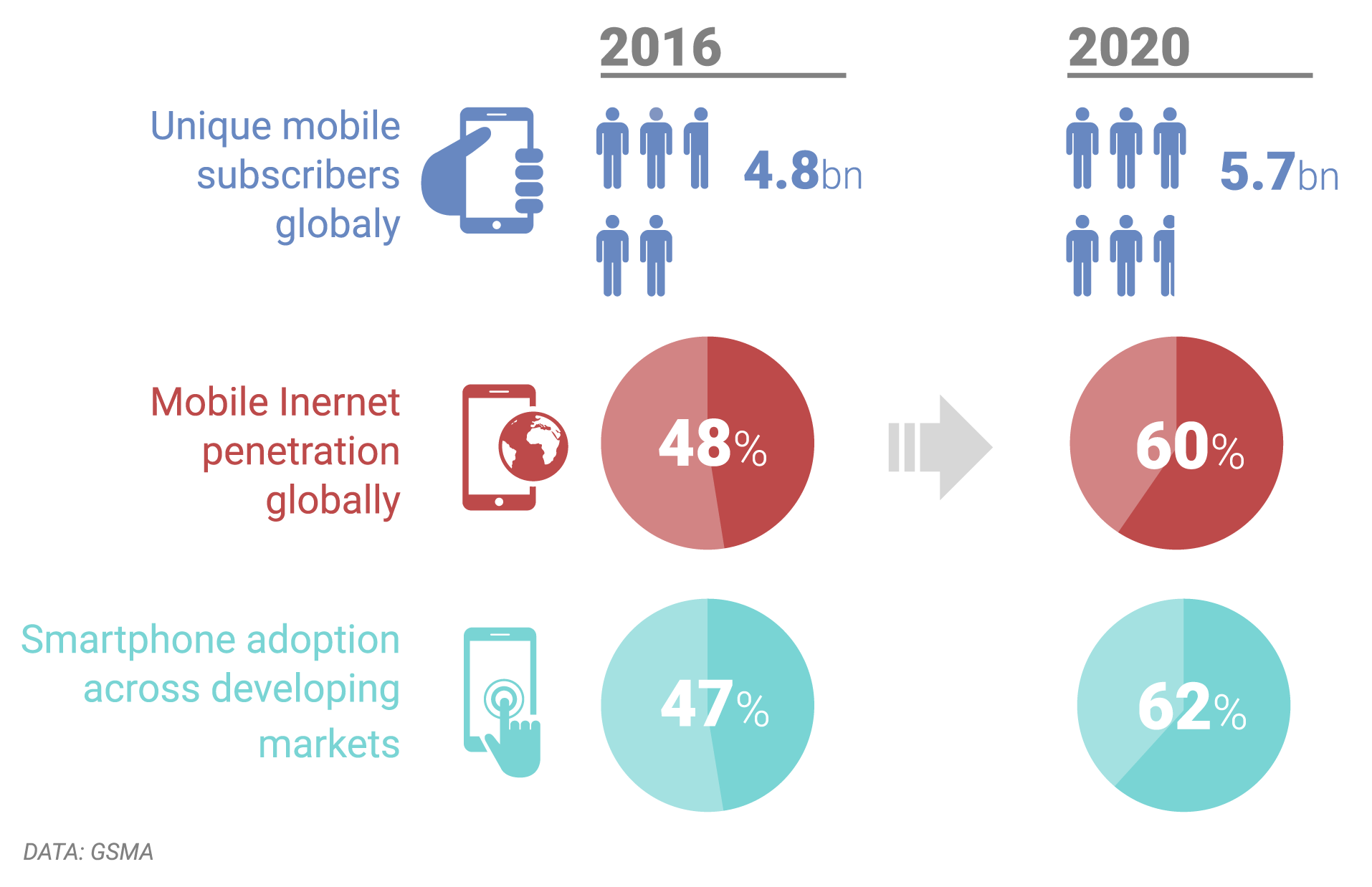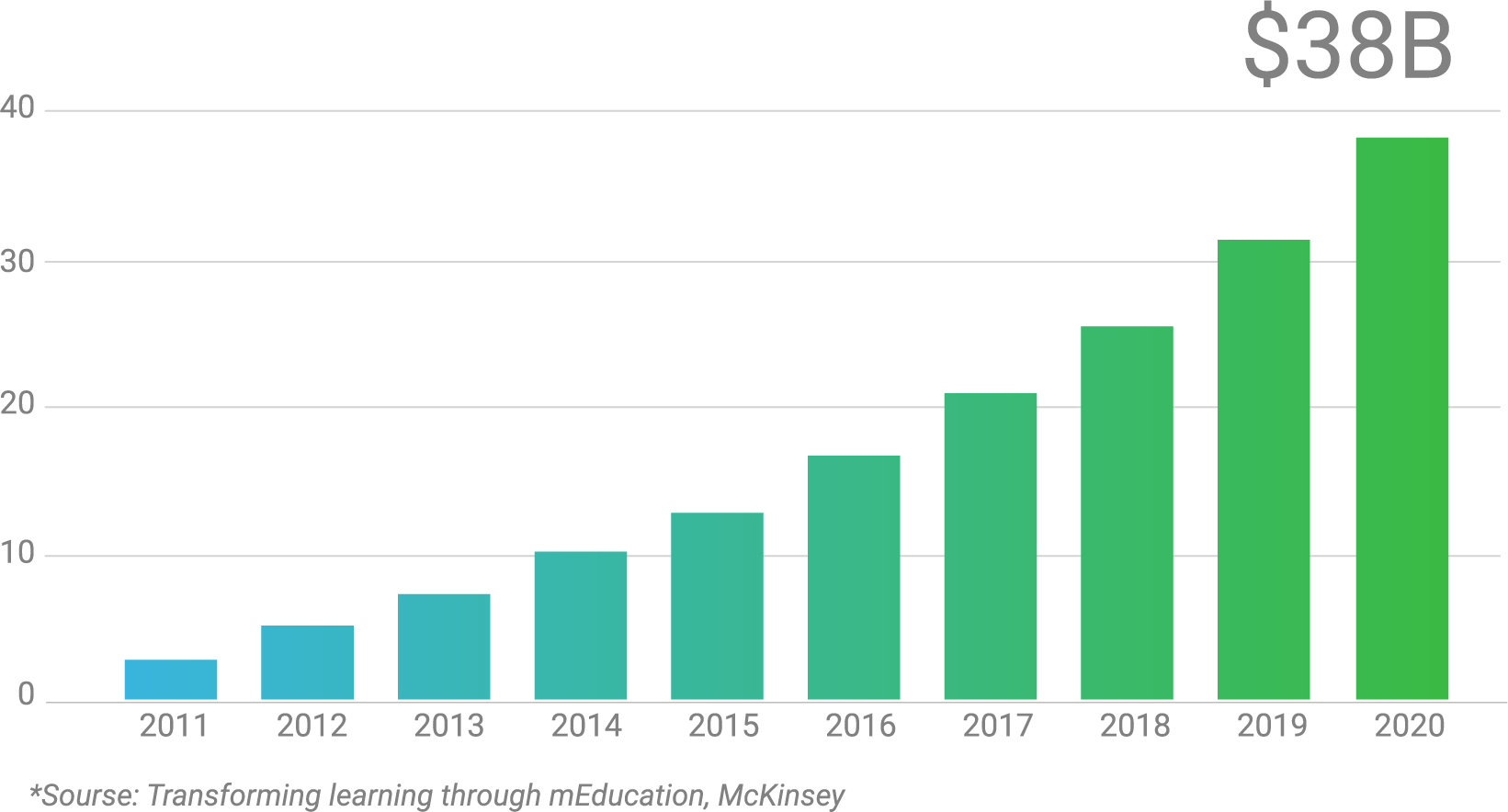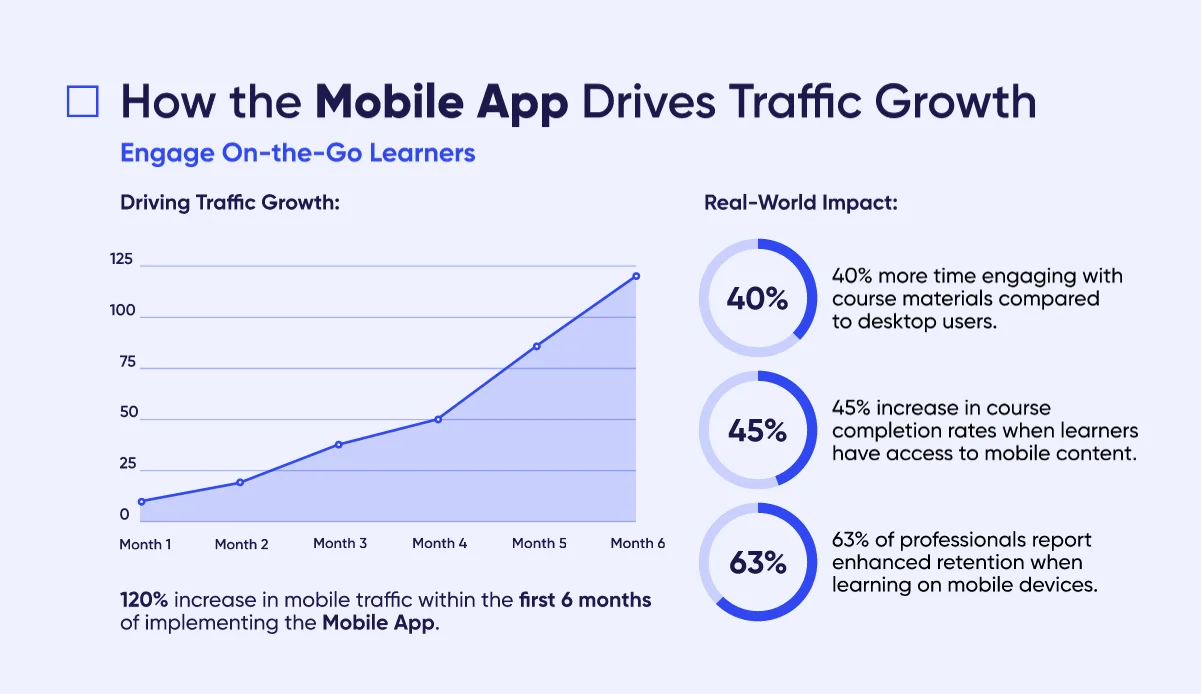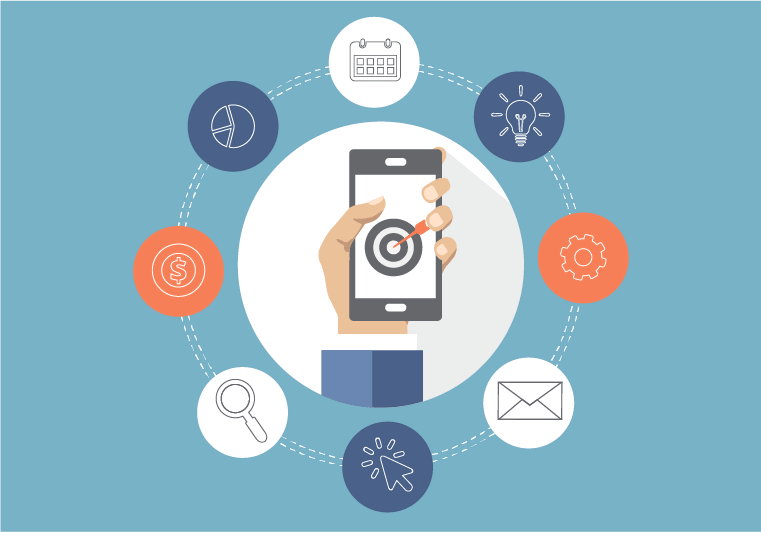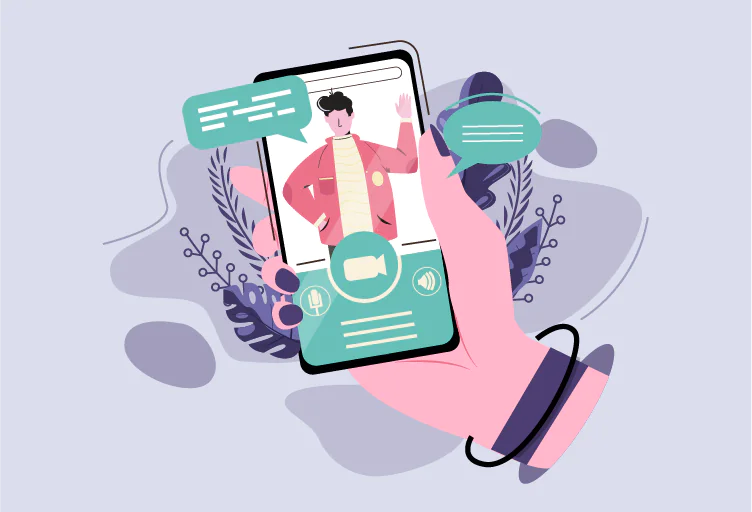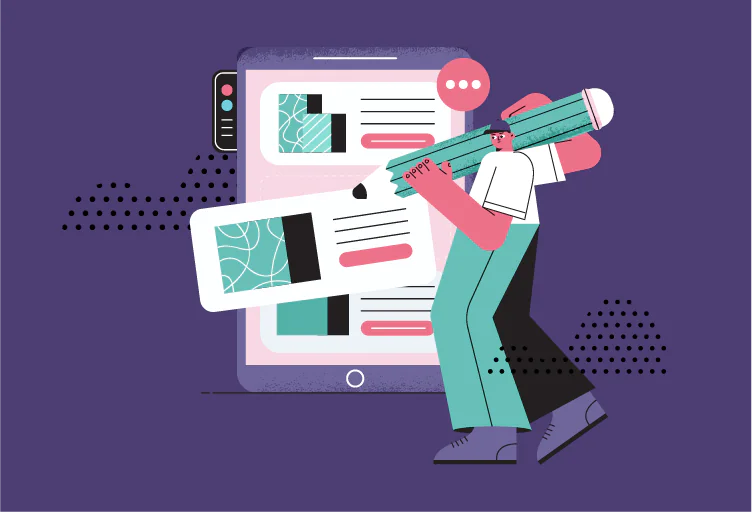Mobile learning, often termed “mLearning,” involves accessing educational content via mobile devices, such as smartphones or tablets, capitalizing on their ubiquity and capabilities to facilitate learning anytime and anywhere. This approach empowers learners, offering both convenience and innovative engagement with course materials and real-world contexts.
Devices that can be used for mLearning include smartphones, tablets, laptops, and digital notebooks. It focuses on the learners’ freedom of movement and their interaction with technology. In this case, simplifying learning by using mobile tools is what constitutes this informal learning setup.
What Makes mLearning Better than Conventional Classrooms?
MLearning is better than conventional schooling in different ways.
While there are several notable features of mobile learning, one feature that tops all the rest is the added convenience for mLearners. This way, you get to learn without having to change your schedule or compromising other important activities, irrespective of where you are and what you do.
What’s more, mLearning supports instant sharing and transferring learning content; this also allows to use an instant feedback system. Feedback is important because it encourages effective learning by giving a prompt assessment.
From a learning perspective, different studies show that mLearning is far more effective than conventional learning approaches. This is mainly because of things like convenience, peace of mind, and feedback that it offers to the learners. Actually, the mLearning process is proven to raise exam scores by about 50 to 70% while cutting dropouts in technical fields by 22%.
Apart from the above-given reasons why mLearning stands out, another important feature attached to this approach is the use of gadgets for education. In today’s world, everyone is more likely to read and learn using digital devices rather than reading paper books. This is exactly what mobile learning takes into account.
Learning through digital gadgets lets learners have more space for exploring and asking questions. This method is much cheaper than conventional classroom learning setups as educators and learners don’t have to pay for venues, electricity bills, and other relevant expenses, let alone the environmental impact of reduced paper consumption.
History of mLearning
Alan Kay is the name behind the introduction of the mLearning concept in the 1970s. He got into Palo Alto Research Center of the Xerox Corporation and teamed up with a few other workers to bring ‘Dynabook’ to life. Dynabook was a handy personal computer that was meant to teach children through an improved digital approach. However, this device failed to impress because of a lack of technological backing in that era.
It wasn’t until 1994 that IBM Simon, the first smartphone ever, was introduced by Mitsubishi Electric Corp; this device was quite similar to Dynabook. Promoted as a handy personal communicator, this smartphone heralded an absolutely new era during which hundreds of similar devices were introduced by various manufacturers. From then on, nobody ever stopped producing ‘smartphones’.
To simplify the introduction to mLearning, it has been divided into three phases. These include:
Phase 1
This phase revolves around the use of mobile devices, such as smartphones, tablet computers, and laptops. Here, educators work to plan lessons that can be easily delivered and accessed through digital gadgets. Even when they can’t work with all sorts of devices, they can focus on at least one device with specialized applications that support mLearning. They should be highlighted and communicated to the learners, too.
Phase 2
Phase 2 is focused on learning in settings different from a typical classroom. This can include things like field trips, visits to museums and places alike. Today digital gadgets support strong Internet connection and this is what educators can take advantage of during such visits in order to communicate with their students without using teaching materials like black/whiteboards or even desktop computers.
Phase 3
The third and the last phase focuses on the mobility of learners. Today, mLearning has become a globalized learning approach. It has gained popularity in regions across the world including Asia, Europe, Australia, Africa, New Zealand, North America, and Scandinavia which have already attained remarkable achievements in this area.
The Importance of mLearning
Now that we know everything about the concept of mobile learning and its history, let’s look at the uses and benefits of mobile learning and a few notable challenges that mobile learners face. The concept of mLearning is not new anymore. Numerous schools and other educational institutions are trying to adopt this technology to be able to better educate learners through laptops and mobile phones. This approach not only is effective and handy, but also fun, and this is why it encourages learning among people of all ages. That is why so many educational applications are introduced and made available to educators and trainers every day.
Uses of Mobile Learning in Education
Creation of Mobile Learning Materials
The easiest way to educate and learn through mobile learning is by developing learning materials/content. These can be anything from videos and audios to texts and infographics. Learners can be given assignments to complete after studying the materials.
This approach of online education is comparatively less interactive but allows users to take enough time to grasp what is being shared, unlike highly interactive sessions. This is known as an asynchronous approach of mLearning, i.e. where the educators and learners are not directly in contact.
Interaction during Lessons
For those educators and learners who prefer interactive learning, mobile devices are the best option. This sort of learning encourages learners to ask questions and discuss other relevant topics on online forums of discussion.
This activity can also go the other way round where the educators ask questions about the lesson and the learners answer them by using their devices or by communicating on a predefined online forum. This method is especially recommended where trainers teach a large number of students.
The learners can even be asked to complete surveys after lessons so that the educators can get prompt feedback in addition to being able to analyze how effective their lessons are.
Synchronous learning
Synchronous learning is the exact opposite of asynchronous learning. In such a setting, students and teachers can communicate in real-time. This approach is preferable when teachers and students deem feedback and interaction important. Both real-time feedback and real-time interaction with students give a great impact on overall learning.
mLearning in Corporate Training & Education
Employee Onboarding
MLearning’s contributions to employee onboarding have made the shift towards a digital workplace smoother. Utilizing mobile devices, companies can deliver essential induction programs, introducing new hires to organizational culture, workflows, and best practices. This ensures not just uniformity in training, but also the convenience of access. New recruits can get acclimated at their own pace, revisit modules, and actively engage with rich media, simulations, or quizzes, making the onboarding process more interactive and less daunting.
Compliance Training
In an ever-evolving regulatory environment, businesses are under constant pressure to ensure their teams remain compliant. Traditional classroom training sessions are often logistically challenging and time-consuming. mLearning offers a timely solution. Employees can instantly receive updated training modules tailored to the latest regulations, ensuring consistent compliance across the board. Moreover, the ability to engage with material in real-time and the presence of interactive assessments ensures that the comprehension of these regulations is not just superficial.
Training Reinforcement
mLearning plays a pivotal role in knowledge retention after the initial training sessions. Research has consistently shown that periodic reinforcement of training materials results in higher retention rates. With mLearning, businesses can send out bite-sized refresher modules, quizzes, or simulations to employees, ensuring that vital information remains fresh in their minds. Such timely interventions can be crucial, especially in sectors where the application of knowledge is critical to business performance.
Performance Support
In today’s fast-paced business world, employees frequently encounter situations where they need immediate assistance or quick access to specific information. mLearning serves as an invaluable performance support tool in such scenarios. Whether it’s a salesperson needing product details during a client pitch or a technician seeking troubleshooting steps at a remote site, mLearning ensures that comprehensive resources are always within arm’s reach. Through intuitive apps, interactive guides, or augmented reality tools, mobile learning enables professionals to pull up the right information at the right time, directly impacting their efficiency and effectiveness on the job.
The integration of mLearning into corporate training and development strategies underscores its adaptability and relevance in today’s digital age. As businesses continue to recognize its value, mLearning is set to become an even more integral part of the corporate learning landscape, driving performance, growth, and innovation.
Benefits of Mobile Learning
Anytime, Anywhere
With mobile learning, you can learn with fun from home or anywhere else you feel comfortable learning. You don’t have to sit straight up and make eye contact with the trainers just as conventional classrooms do. In such a setting, you can simply lie down in your bed with a bag of chips in your hands and watch/listen to a lecture or read through lessons. It’s no different from watching a movie, except that it is not for entertainment purposes.
Enthusiasm
As discussed before, learners today are more likely to enjoy learning through digital gadgets than paper books. You can test the same by announcing ‘we are going to have a dictation today’ in both physical and virtual classes. The reaction that you will get from the children in the mLearning setup will definitely be far better than those who study in classrooms.
The same is the case with the professional world. More employees will be happy to attend online training and sessions than sitting in the training room and act like students.
Apart from the convenience, one important reason behind mLearning being widely preferred is that the world today is all about technology and this has brought people to be comfortable during interactions that aren’t one-on-one.
Diversity in Learning Resources
With mobile learning, educators can add videos, audios, visuals, and even different text styles to make lessons seem interesting. These resources make education more fun and interesting.
Easy Access to Quality Education
Since mobile learning allows learners from all over the world to come and learn together, there is no need for anyone to worry about getting a quality education or even traveling locally or internationally to get it.
You can be in third-world countries and still have easy access to the quality education that developed nations offer without spending a bit on traveling and other expenses.
The Disadvantages
1. It can be a distraction
While mLearning capitalizes on the ubiquity of mobile devices, it also contends with the myriad of distractions they house. Notifications from social media, calls, messages, and other applications can disrupt the learning process. Without discipline or proper app management, learners can easily be sidetracked, reducing the overall efficacy of the mobile learning experience.
2. Tech barriers
Despite technological advancements, not all learners possess the same level of tech-savviness or access to the latest devices. Some might struggle with navigating applications, understanding features, or even dealing with device compatibility issues. This can lead to frustration, disengagement, and ultimately, a compromised learning process.
3. Expertise
mLearning demands a unique blend of pedagogical knowledge and technical expertise from educators. Creating mobile-friendly content that’s engaging, interactive, and educationally sound can be challenging. Not all instructors or training developers have the expertise to effectively utilize mLearning tools to their full potential, which can affect the quality of the content delivered.
5 Best Mobile Learning Tools
1. ProProfs LMS
Renowned for its user-friendly interface, ProProfs LMS offers a comprehensive suite of tools for course creation, assessment, and reporting. Its cloud-based system means easy access, anytime, anywhere, and its versatile design capabilities ensure engaging content delivery for learners.
2. Adobe Captivate
Adobe Captivate stands out for its advanced eLearning authoring capabilities. It allows educators to design responsive mobile courses, integrate virtual reality scenarios, and create interactive multimedia content that can elevate the mLearning experience.
3. EdApp
EdApp shines in the microlearning sector. With a focus on bite-sized lessons optimized for mobile devices, it promotes increased retention and engagement. Its library of customizable templates makes course creation straightforward, even for those new to eLearning.
4. Lectora
Lectora is a powerful eLearning authoring tool known for its flexibility. It supports HTML5 content creation, ensuring courses are accessible across devices. With its range of interactivity features, it offers a dynamic learning experience for users.
5. UpsideLMS
UpsideLMS provides a holistic learning management solution. Aside from its mobile learning capabilities, it offers blended learning, social learning, and reporting features. Its intuitive design ensures both administrators and learners have a seamless experience.
mLearning – Game Changer of the Training Industry
There are no second opinions about the fact that mobile technology is one of the most rapidly adopted technologies in history. A mere concept until the 1980s, mobile technology has become widespread to the extent that nearly 1.5 billion smartphones were sold throughout the world in the year 2016.
With the mobile workforce expected to double or triple in size by next year, it is no surprise that the technology is penetrating through countless different domains and industries. Seeing the popularity of the mobile phone and mobile technology in general, American author Ray Kurzweil was right when he said “mobile phones are misnamed. They should be called ‘gateways to all human knowledge’.” With nearly 63% of the population having access to mobile phones in 2016, it is fair to say that mobile technology has become normal in the lives of many. The portable nature of mobile technology has allowed consumers throughout the world to receive and access information at their convenience. Universal access to content has ensured that the general limitations regarding learning and training are no longer present. Not only can content and training be provided from anywhere, but since the major part of the population of the world has access to mobile technology, it is also possible for relevant content to be provided to people.
A recent follow-up survey of the Merrill Lynch GoLearn Initiative showed that 24% of participants reported completing their training while commuting while 26% even completed training at home. Additionally, 99% of people felt like the new format and presentation of the content supported the learning objectives that the training had and more than three fourths of participants of the survey loved the convenience factor that was involved. People were also particularly fond of the technology due to the fact that their time was managed more properly when they were able to leverage mobile technology for training and because they were able to complete the training without any distractions.
Data from a study on the efficiency of mobile learning helped prove the effectiveness of mobile technology in teaching and training even more. The survey compared how well participants retained information from a live lecture to a podcast that was displayed on a mobile device. The results were not surprising at all. Podcast viewers ended up scoring nine out of one hundred more than the attendees of the lecture on average, proving that the new technology was much more efficient for teaching and training purposes.
How to Use mLearning Software for Skill Development
1. Promote Active Learning
Rather than just being passive recipients, encourage learners to actively engage with content. Use interactive simulations, quizzes, and discussions to foster participation. Tools that offer gamification or scenario-based learning can be particularly effective in this realm.
2. Track Progress & Completion
Use the analytics and reporting features of mLearning software to monitor learners’ progress. By understanding where learners excel or struggle, educators can tailor content or offer additional resources. Completion tracking ensures that learners fulfill course requirements, vital for certification or compliance courses.
3. Enable Offline Learning
Consider the connectivity issues some users might face. Opt for mLearning tools that offer offline modes. This ensures that learners can access materials even without an internet connection, then sync their progress once back online.
4. Optimize Performance Support
mLearning isn’t just about courses. Use the platform to offer resources, guides, and quick references that employees or students can access on-the-go. This not only supplements formal training but ensures that users have support right when they need it.
As learners increasingly turn to their mobile devices for knowledge acquisition, it’s essential to have the right mLearning software in place. That’s where Raccoon Gang steps in to offer the best possible solution with the Open edX® Mobile App.
Open edX® Mobile App: Get the Best Mobile Experience
Raccoon Gang takes pride in providing top-tier mobile app services for deploying and customizing the Open edX platform specifically for mobile devices. With our Open edX® Mobile App, you can offer your learners a seamless and engaging mobile learning experience. Whether you’re an educational institution, a corporation, or an individual instructor, our app is designed to meet your unique needs.
What Makes Our Open edX Mobile App Stand Out:
- Deep Customization.
- User-Friendly Interface.
- Offline Learning.
- Seamless Integration.
- Real-Time Analytics.
Don’t miss out on the opportunity to offer the best Open edX mobile experience to your learners. Explore Our Open edX® Mobile App Now!
When approached with insight and strategy, mLearning can become a powerful ally in skill development. By understanding its strengths and limitations and harnessing the best tools available, educators and organizations can foster a dynamic, flexible, and impactful learning environment.
Mobile Learning Challenges
A Lack of Focus and Attention
It is easy for mobile learners to get distracted because of several entertainment options that come handy with digital gadgets. Whether the students are children or adults, things like games and social media can easily divert them away from the lessons being taught. Indeed, mobile education is fun. But it can never be more fun and interesting than socializing or playing games.
With that said, self-discipline and strong focus are the essentials of successful mobile learning. However, this can also be controlled by arranging live and interactive sessions with the learners, allowing short breaks, and incorporating fun activities and games into learning plans.
Increased Dependence on Electricity and Internet Connection
With mobile learning, users are fully dependent on electricity and internet connection. In fact, mobile learning is simply not possible without these two. This could be an obstruction for those who live in areas where internet connection and electricity are not readily available.
Nonetheless, despite the challenges associated with mobile learning, a majority of educators and learners are considering this learning approach these days. This means that even people in rural areas of the world are making efforts to combat electricity and internet issues in order to become mobile learners. And that simply tells how effective and interesting this learning approach is.
The Scope of Mobile Learning
Learning that is mobile-based is what most learners seek. Mobile learning allows learning in your comfort zone; it doesn’t require anyone to let go of their regular activities and plans.
In fact, for those who fail to take online lessons can even have continuous access to learning resources like articles, videos, audios, visuals, and even text. This on-demand availability has further contributed to the success and fame of this learning approach.
These benefits of mobile learning and others, like eco-friendliness, cost-effectiveness, convenience and level of fun derived from learning, have even compelled corporate giants and growing businesses to switch from physical to virtual training setups.
Because of the continuous introduction of new devices and the varieties that are available today, the prices of mobile devices have dropped radically over the years. This is the cherry on the top for those considering mLearning. This implies that everyone, from those who are young to the aged, can easily make a one-time investment to get years of learning and fun. Not a bad deal at all!
mLearning Implementation: Some Additional Thoughts
Having access to technology and not knowing how to use it properly is a surefire recipe for disaster.
Implementation of mobile learning requires a lot of resources so thorough planning is a must. A good way to start is to outline the context and situations where mobile learning will prove to be more efficient and beneficial than other conventional techniques and approaches. If mLearning is able to give your organization the advantages that we outlined in this post, you should definitely incorporate this technology into your online learning ecosystem. However, before adopting this positive approach, it’s crucial to review the main points once again.
Identify the Need and Analyze Your Audience
The initial step in implementing mobile learning is understanding its purpose within your organization’s context. Identify the specific learning objectives and scenarios where mobile learning can outperform traditional methods. Analyze your audience – their preferences, tech-savviness, and learning styles. This insight is crucial for tailoring content that resonates with them and ensures engagement.
Determine the Costs
Budget considerations are pivotal. Assess the monetary costs and the time and resources required for creating, maintaining, and updating mobile learning content. Factor in expenses related to technology, content creation tools, and ongoing support. This analysis will guide decisions and prevent unexpected financial constraints mid-implementation.
Decide on the Devices
Compatibility with various devices is fundamental for successful mobile learning. Consider the devices your audience commonly uses. Opt for a responsive design approach that ensures seamless access across smartphones, tablets, and possibly wearables. Understanding device capabilities and limitations will influence content development and delivery strategies.
Design Courses Considering the Small Screen
Mobile screens have limited real estate, demanding a focused and concise design. Embrace microlearning principles, breaking down content into digestible chunks. Prioritize simplicity, clarity, and interactivity to engage learners effectively within smaller screens. Visual elements and multimedia should be optimized for mobile viewing.
Choose the Right Authoring Tool
Selecting an appropriate authoring tool streamlines content creation for mobile learning. Look for tools that support responsive design, offer templates, and enable easy integration of multimedia elements. Consider collaborative features and ease of updating content, aligning with your team’s expertise and the intended learning outcomes.
Select the Right Delivery Method
Explore various delivery methods for mobile learning, such as apps, web-based platforms, or Learning Management Systems (LMS). Each method has its strengths and limitations. Choose based on factors like accessibility, offline access, analytics capabilities, and user experience. Prioritize a method that aligns with your audience’s preferences and technological infrastructure.
Integrating mobile learning isn’t just about technology—it’s a strategic decision that impacts your organization’s learning culture and effectiveness. By meticulously addressing these steps, you pave the way for a robust mobile learning environment that maximizes engagement and knowledge retention.
If you already incorporated mobile learning in your organization, you can increase its positive effect by using modern tools and apps. There are a lot of inspiring mLearning features out there to boost its effectiveness and make the learning experience you deliver unforgettable!
-
7609 09/Feb/2018
-
1631 26/Aug/2020
-
1904 27/Oct/2020
- What Makes mLearning Better than Conventional Classrooms?
- History of mLearning
- The Importance of mLearning
- Uses of Mobile Learning in Education
- mLearning in Corporate Training & Education
- Benefits of Mobile Learning
- The Disadvantages
- 5 Best Mobile Learning Tools
- mLearning - Game Changer of the Training Industry
- How to Use mLearning Software for Skill Development
- Mobile Learning Challenges
- mLearning Implementation: Some Additional Thoughts



